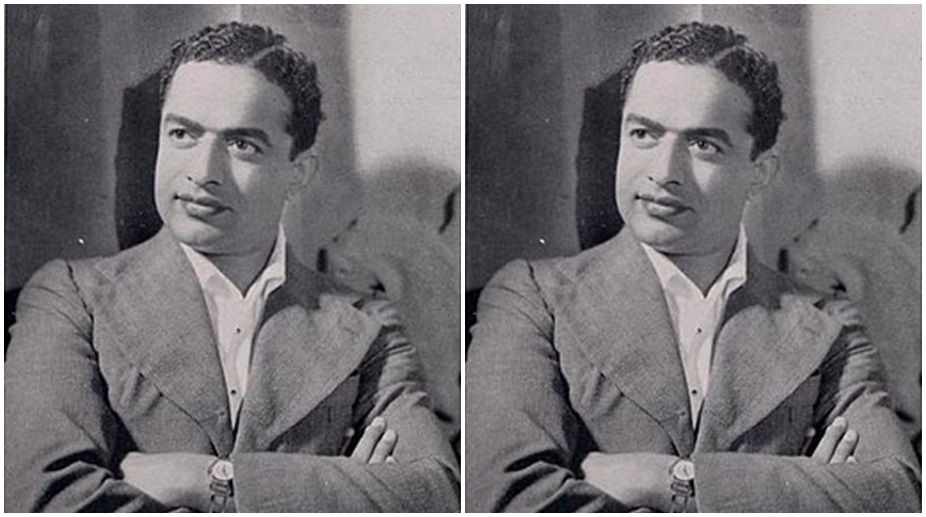Relive the 50s this Holi with ‘Bajaa Bajaa’ from film Mere Pyare Prime Minister
The latest song from Rakeysh Omprakash Mehra's film, Mere Pyare Prime Minister, is out. The track brings back the iconic melody from the 50s era.

V. Shantaram
Google on Saturday celebrated the 116th birth anniversary of renowned Indian filmmaker, actor and writer Shantaram Rajaram Vankudre, famed as ‘V. Shantaram’, alias Annasaeb.
A colourful doodle depicts Shantaram’s pensive profile, with an iconic old movie camera of the early filmmaking era, stills from a Marathi film, and his two later blockbusters, “Do Aankhen Bara Haath” and “Jhanak Jhanak Payal Baaje”.
Advertisement
Shantaram was born on November 18, 1901 in a Marathi Jain family in Kolhapur in Maharashtra.
Advertisement
He started acting at the age of 20 in a silent film — barely seven years after the legendary Dhundiraj Govind Phalke alias Dadasaheb Phalke created Indian cinema history with his first feature film “Raja Harishchandra” (1913).
Later, the multifaceted Shantaram not only continued acting but also went into film-making, and made his mark in acting, producing-directing, scripting Marathi and later Hindi films.
Over the years, he acted in films like “Surekha Haran” (1921), “Sinhagad” (1923), “Savkari Pash” (1925), “Parchhain” (1952), “Stree” (1961), besides the globally-acclaimed “Do Aankhe Bara Haath” (1957) and “Dr. Kotnis Ki Amar Kahani” (1946) — the latter considered a tribute to Indo-Chinese friendship.
Other major films included “Duniya Na Mane” (1937), “Padosi” (Marathi-Hindi, 1941), “Dahej” (1950), “Amar Bhopali” (1951), “Jhanak Jhanak Payal Baaje” (1955), “Pinjra” (Marathi-Hindi, 1972/1973) among others.
He was among the earliest to realise the power of the film medium to convey social messages effectively which he utilised to the hilt.
Shantaram made films woven around such powerful themes, interspersed with good acting and music, through the Prabhat Films which he founded in 1929 in Kolhapur, and later through the Rajkamal Kalamandir.
Accordingly, Shantaram’s films tackled wide-ranging subjects like the rigid caste system, dowry menace, communal harmony, socio-economic divides, gaps between the rich-poor, etc., all of which are still relevant today.
At one time another legendary actor filmmaker Charlie Chaplin had described Shantaram’s “Manoos” (1939) as one of the most interesting Indian classic films.
A ‘reformist-social drama’, it told the story of an honest policeman’s love for a prostitute and his attempt to reform and rehabilitate her by marrying her, but how society did not approve of the relationship which ultimately ended in misery.
In his sterling career spanning nearly six decades, Shantaram was involved with more than 55 films, several of them top blockbusters of that era and bagging some of the topmost honours and accolades.
He was conferred the coveted Dadasaheb Phalke Award in 1985 and in 1992, the country’s second highest civilian honour, Padma Vibhushan, posthumously.
Shantaram was married thrice including first to Vimla, and had three children – Prabhat, Saroj and Charusheela.
Later he married actress Jaishree Kamulkar through whom he had three children, including Marathi actor-filmmaker Kiran Shantaram, renowned Hindi film actress Rajshree and Tejashree.
His third wife was his former co-actress Vijaya Deshmukh alias Sandhya, his co-star in several films including “Jal Bin Machhli, Nritya Bin Bijlee” and “Do Aankhen Bara Haath”.
Shantaram introduced his daughter Rajashree and a young boy Jeetendra (Kapoor) in “Geet Gaya Patharon Ne”. Both went onto become legendary stars.
He passed away in Mumbai on October 30, 1990, aged 88.
Later, the central and state government instituted the ‘V. Shantaram Award’, besides other awards in his name by various organisations to honour people excelling in different branches of filmmaking.
Advertisement